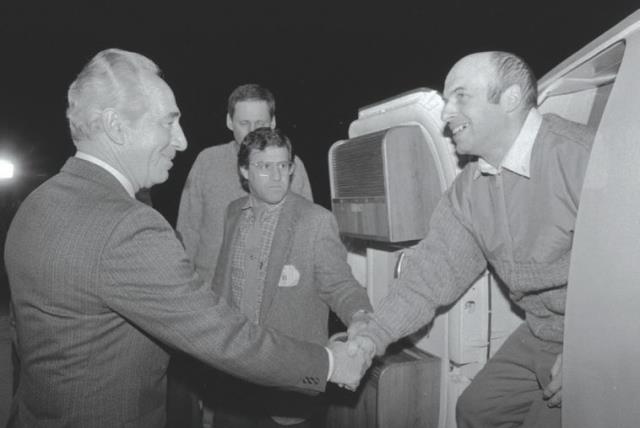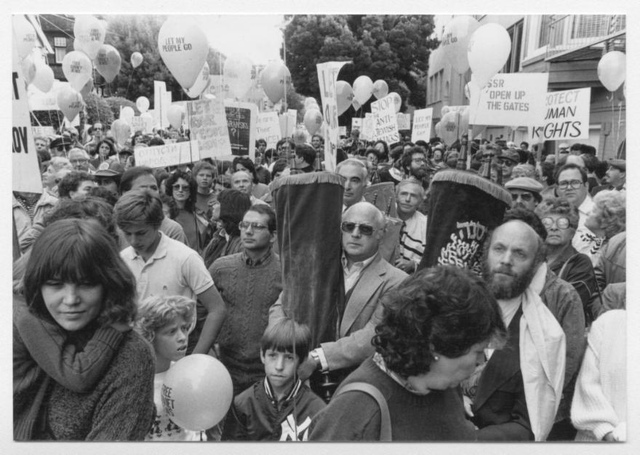We learned about the refugee crisis of Soviet Jews, Syrians, and the Burmese. Each story comes with tales of hardship, determination, and courage. In class, Dr. Lasevich, a Jewish refugee from the then Soviet Union, told her story of her journey to America. We watched a documentary detailing the struggles of Soviet Jews to escape and gain their freedom. We also listened to a guest speaker, Mr. Novofastovsky, share his experience and story of his journey out of the Soviet Union.
The Jewish community in the Soviet Union has always faced discrimination. Jews were required to have “Jew” written on their birth certificate and all of their official documents, as they were seen as “others” and of a different nationality than “normal” Russians. From not being able to practice their religion to being beat up in the streets for their heritage, the Jews have been oppressed for years. Starting in the 1960s and 70s, Jewish people who desired freedom and a new life were allowed to apply to leave to Israel, as the belief was the Jews could reunify with their families in Israel. This journey was difficult, but it was possible.
However, as more and more well-educated Jews from Moscow and other big cities started applying and leaving, the Soviet Union became worried. They began imposing stricter regulations on those applying to leave, and many applications of those with high education and important skills were rejected. These Jews came to be known as refuseniks.
Life became almost impossible for refuseniks. During the application to leave, people had to inform everyone that they were leaving. Applying meant telling the state that you did not desire to remain in the Soviet Union, thereby making you an enemy of the state. Immediately after applying, Jews lost their jobs and nobody would hire them. If refused, they had no way to survive. Furthermore, from 1961 to 1991, unemployment was illegal in the Soviet Union. Many refuseniks were arrested because they did not work.
Dr. Lasevich shared her terrifying experience after she and her family became refuseniks. Her parents, well-educated citizens, were fired from their jobs and nobody would hire them. As they did not work, her parents were arrested very frequently, and, since she and her brother were minors, they could be taken by the government and put into orphanages. If that happened, even if her parents were released, their family would be broken. To prevent their family from being forcibly torn apart, she and her brother had to hide at the sound of a knock on their door and seek refuge with distant relatives if their parents were arrested.
Jews in the Soviet Union also were not granted access to great education. Many were not admitted to schools because of their religion, and only two universities were open for Jewish people to attend.
Despite all of these hardships, the Jews persevered. Although faced with life-threatening obstacles if refused, the Jews kept on applying to leave. Their actions inspired many around the world. People everywhere showed their support for the Soviet Jews. Protest after protest, rally after rally, countless showed up and spoke in support of the Soviet Jews. American citizens lobbied so the government would put pressure on the Soviet Union to release the Jewish. Finally, under extreme global pressure, the Soviet Union finally released the Jews. They were FREE.


Anatoly Sharansky, a Soviet Jew and longtime dissident of the Soviet Union, is released from Soviet prison.
Sharansky and his wife, Avital, applied to leave the Soviet Union for Israel in 1973. His wife was granted an exit, but he was refused. Chances only come once, so his wife left, both of them still with high hopes that Sharansky would soon follow. However, these hopes were slowly distinguished. Sharansky was arrested on March 15, 1977 on multiple charges because of his political activism, including high treason and spying for Americans. Sharansky spent the following nine years in Soviet prisons as a refusenik. In Israel, Avital saw the news and sprung into action. She refused to give up hope and did everything in her power and more to rescue her husband. She gave speeches, organized protests, reached out to many Jewish communities in the world, and finally, the government heard her voice. On February 11, 1986, the Soviet Union relented, releasing Sharansky in an exchange of detainees with the United States.
However, this journey was far from over. Jews who were allowed to escape had to start a brand new life on their own. Many decided to immigrate to Israel or the USA, some also going to Canada or Australia. In each of these countries, they encountered countless challenges, like difficult language barriers, social disparities, and cultural differences, on their way to begin a whole new journey.
From these stories, I learned that anything is possible. People around the world worked for a common goal, for equality and the basic human rights everyone deserves. The Jewish community in the United States was especially passionate about the suffering of Soviet Jews, and did all they could to try and help the Soviet Jews. This event was an eye opener for me to the bonds around the world that are created by religion, culture, or ethnicity.


Recent Comments